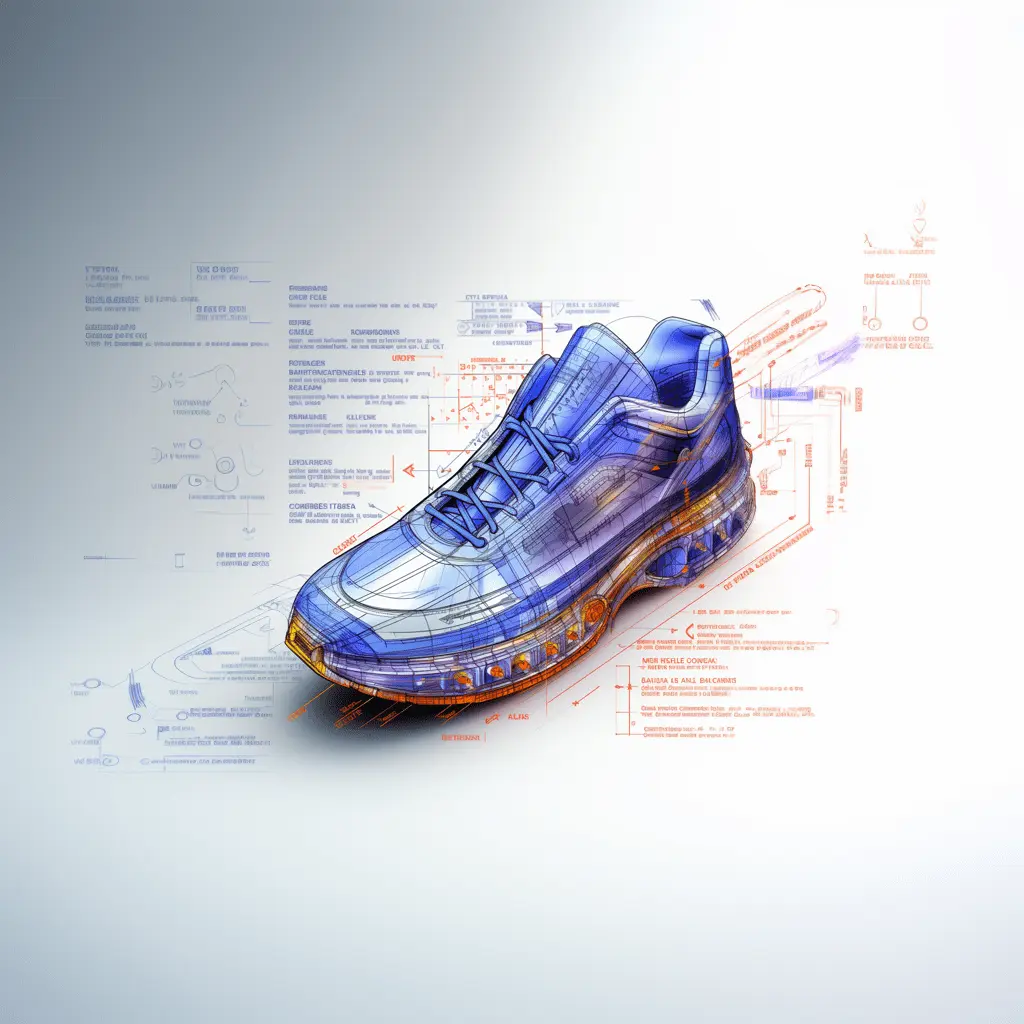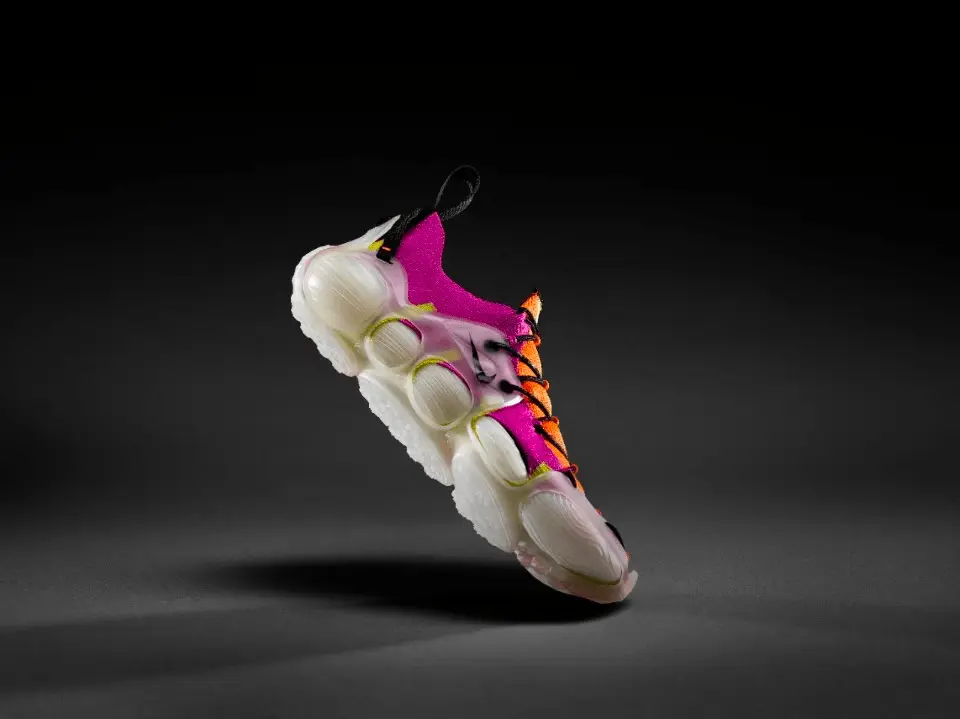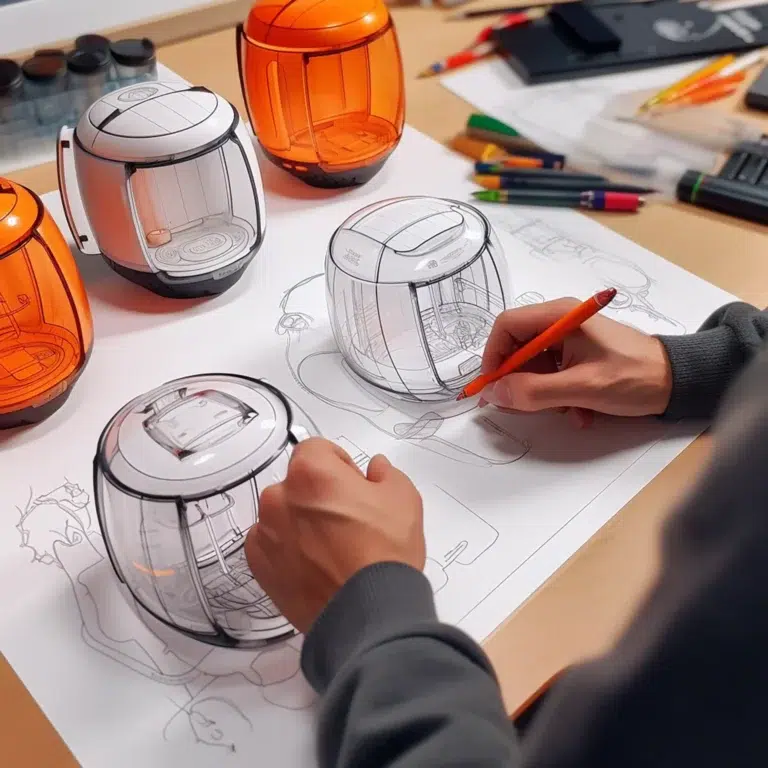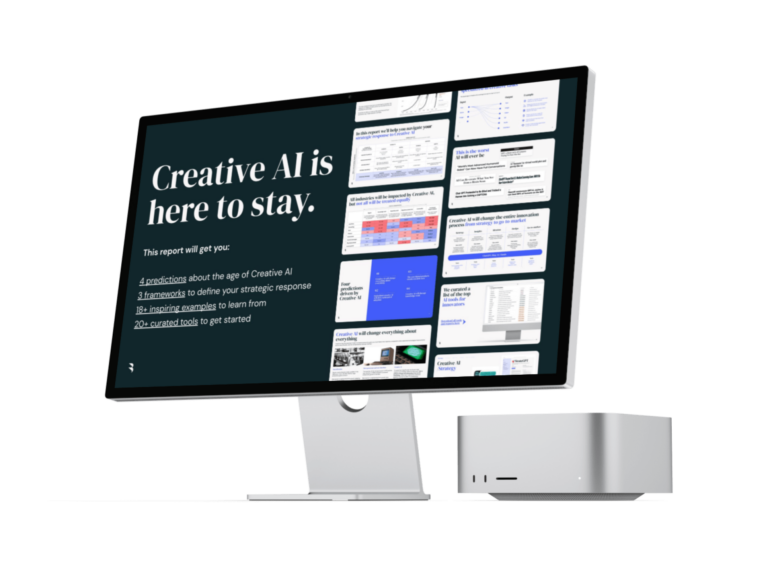Designing tomorrow’s fashion with GenAI

Director, Digital Product Creation at VF Corporation

Principal Business Designer
Imagine you’re a designer at Lululemon, tasked with crafting a novel women’s yoga line. Where do you draw inspiration? From Instagram likes, Tik Tok videos, runway couture, even competitors’ best-sellers. But, how do you collate and analyze this ocean of data? Where do you even start?
One answer lies in transforming the inspiration, planning, and manufacturing processes to harness the power of data, digital product creation and Generative AI.
The fashion industry is ripe for disruption
Fashion, an industry synonymous with creativity and trend-setting, often surprisingly clings to age-old traditions when it comes to its creation processes. Many fashion enterprises, despite their forward-facing aesthetics, harbor reservations about diving fully into the digital realm.
Traditionally, brands have been dependent on Excel sheets for line planning. This method, though once effective, has become increasingly archaic. In today’s rapidly moving world, Excel line planning models can be years out of date with the market, leading to poor planning and line assortments.
Shein, a fast fashion app, uses real-time data and analytics to micro-target its customers’ preferences. By scouring the internet for emerging fashion trends, Shein manufactures small quantities of garments using its vast supplier network. This allows the app to offer thousands of new clothing options every day, reducing overproduction and overstocking, two major issues in the fashion industry. Shein’s innovative strategy shows how on-demand manufacturing can help address fashion’s biggest issues of overproduction and overconsumption.
The problem with these fast fashion brands is that they use all this data to drive production volume, rather than simply driving quality, revenue and engagement. This comes at the expense of our natural environment.
Fashion is the second most polluting industry (after aviation), responsible for about 10% of the world’s pollution and 20% of global water waste. Fast fashion brands rely on short consumption cycles and are disproportionately responsible for this.
Naturally, poor planning leads to overproduction. In any given season, 30% to 40% of clothing is overproduced, meaning these costs need to be factored into prices. Not factoring in changes in consumer preferences and tastes leads to an erosion of brand relevance.
Digital product creation has been a game-changer, drastically reducing the product development lifecycle to as short as a month for some items. The caveat? The need to recalibrate traditional product processes to optimize this acceleration. Some of the world’s leading companies have embraced this shift, reaping immense benefits from such advanced digital integration. Let’s dive into how they managed.

Digital technology has been fueling fashion’s growth for decades
The 90s saw Apparel conceptualized through pen and paper, a time when sketches were the blueprints. But as we ushered in the new millennium, 3D design started taking center stage. Brands like Nike, with their eye always on the horizon, began using digital simulations for creating a better fit, considering the unique contours of athletes such as Tiger Woods and Serena Williams.
Despite these leaps in design ideology, it wasn’t until the embrace of 3D technologies that creation processes saw significant truncations in time—from a lengthy 6 weeks to a mere few days. Nike and Adidas emerged as the frontrunners of this change, digitizing patterns and simulating fabric physics.
Besides time, there are colossal sustainability benefits of this type of digital prototyping, as it eliminates the need for intermediate samples and all the back and forth suppliers.
With the digital prototyping process, we can create a prototype in just one day. The factory can then turn around and create a physical prototype in three to four days
Joshua Young, Director Digital Product Creation, VF Corporation
In the late 2010’s brands unlocked an ability to model fabrics and soft bodies in 3D, to be able to contour things to your body (think: better fitting sportswear and yoga clothes), to mapping the human body’s heat and sweat production in physical activity to create more breathable and flexible sportswear.
Digital products now are almost as good as physical products in conveying all the attributes of apparel – not just the look and feel, but also how it’s manufactured, stretch, and other things that we traditionally thought we could only get from physical prototypes.
One of the exciting things about digitizing this whole development process is that, as you might imagine, all the physical development that's done is a massive waste because all of those samples and prototypes that are created, they just get tossed away at the end of the process.
Joshua Young
Brands like Patagonia adopted this technology to eliminate physical waste. Digitizing the process results in significant savings, particularly in product development for fashion and in terms of sustainability.
For example, a brand’s product development process begins with a sketch that is sent to a vendor who creates a 3D model. The designer makes revisions quickly and frequently, going back and forth with the vendor until completion, which can take less than a week. The designer then adds color, material, and graphics to the 3D model, creating a beautiful, marketable prototype.
The dawn of Generative AI in fashion
As we look into fashion’s future, the appeal is clear—reduce waste, focus on authentic inclusivity, and harness real-time data to stay on-trend. The fashion world is pulsating with possibilities, and Generative AI has the potential to disrupt it.
Generative AI is not just a buzzword but a tool to address specific challenges in the fashion industry. From informing designs, considering unique human nuances like body heat and sweat patterns, to simulating material effects, the possibilities are boundless.
With social media flooding with real-time fashion feedback and e-commerce websites tracking items that are flying off the shelves, there’s a wealth of data out there for the fashion brands to utilize. But, without the power of AI, sifting through this data is too much for humans. When it comes to design, Generative AI can make it easier for designers – for example to apply biomimicry principles, by taking the laws of nature and what we know about biomechanics and fashion to rapidly iterate clothing and create superior sportswear.
Let's say that you tell an AI engine, the human body gets hot here, it gets really uncomfortable around the neck. You sweat a lot in the center of your shirt. Design me a top that makes it as comfortable as possible around the neck, reduces heat around the underarms, and wicks water away from the center of your body. And then see what comes out of that AI solution.
That's a great way to inform how to build a product.
Joshua Young
Generative AI’s prowess doesn’t just stop at concept ideation; there’s a monumental market potential for tools that combine the use of AI with 3D design, creating products that aren’t just visually striking but also manufacturable.
That’s one of the bottlenecks of Generative AI solutions today – it’s great at conceptualizing things, but not so good at creating 3D designs for factories.

Although this concept looks great, it's gibberish to a manufacturer
The role for the designer
But where does this leave our human designers? As per Joshua, “The role of the designer has always been about conceiving the concept.” AI might generate, but humans curate. In this digital renaissance, there is an undying role for human creativity.
Contrary to some beliefs, Generative AI doesn’t aim to replace human creativity. Instead, it amplifies it. Though AI struggles with prediction due to its reliance on historical data, it excels at suggestions. For instance, it can suggest materials, colors, or styles that could be the next big thing. When fed with diverse data sources — from high fashion runways to regional trends in places like Harajuku, Japan — AI could generate multiple versions of a potential hit product. It’s then up to the human designer to cherry-pick, refine, and bring that product to life.
Building on top of the digital infrastructure of the past few decades, the fashion industry is ready to take its leap from digital product creation to Generative AI. The leading brands will be the ones that embrace Generative AI – brands that leverage Generative AI will replace brands that don’t.
Fashion brands that are making good use of AI
Many fashion brands and retailers have incorporated AI into various aspects of their operations, from design to production. Here are some prominent fashion brands that are using AI, to help optimize their supply chain and become more sustainable.
Stitch Fix
Uses AI algorithms to analyze data and customer feedback to provide personalized clothing recommendations. They also use AI for demand modeling, inventory management, and new style and concept development.
H&M
Uses AI to study local style preferences and AI-driven demand prediction to optimize the supply chain, with the aim of achieving a climate positive value chain by 2040.
Nike
Uses AI for digital prototyping of new models, reducing physical waste and manufacturing costs.

Nike ISPA Link Axis
“Through AI they have been rethought and hybridised to create a design that lies
somewhere between streetwear and leisure footwear, neither a trainer nor a slider or sandal”
Rent the Runway
Employs AI to determine the stock count required for items, anticipate the season’s hottest looks and ensure they have the correct sizing in store for their customers. The more successful fashion rentals become in predicting trends and needs, the less personal purchases we’ll make.
Levi's
Levi’s launched an AI-powered personal shopper helping the online consumer find the clothes they need, best suited to their style and size. This might not be directly enabling sustainability, but by helping customers make better buying decisions, these consumer-facing tech solutions result in fewer return, and less waste, and thus reduces the carbon footprint.
Heuritech
Uses AI to do the heavy lifting and determine the trend forecasts by analyzing millions of images daily, shared on social media. This allows product developers to use that time to interpret the data and design new garments for retailers.
Ripe for disruption
Generative AI has the potential to disrupt the fashion industry – from ideation and inspiration to manufacturing and planning.
There are so many ways in which AI can impact fashion. And we’ve highlighted just a few of them:
- Informing how to build and design new products
- Reducing the product development lifecycle and time-to-market
- Digital prototyping to reduce waste of physical prototypes
- Predicting demand to optimize production and planning
How do you get started with implementing AI in your innovation processes?
Have a chat with us and let’s discuss how you can leverage the power of generative AI in fashion.
Join us at our virtual Autonomous Innovation Summit to discover how AI is changing the way we innovate, operate and design – and how businesses can transform to thrive in this autonomous world.


